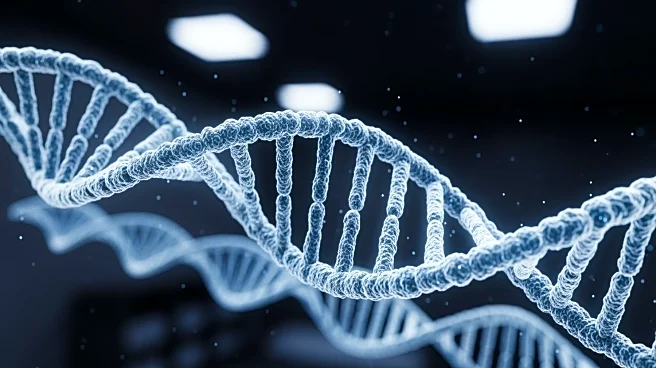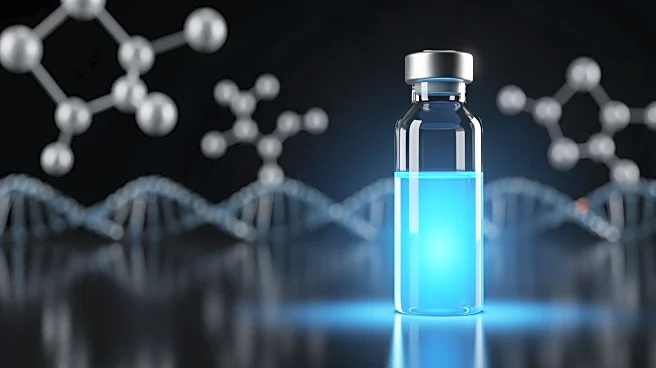What's Happening?
Recent research has delved into the molecular mechanisms by which olanzapine, a second-generation antipsychotic, reduces agitation in schizophrenia and bipolar disorder. The study utilized network pharmacology
and molecular docking analyses to identify 185 common targets associated with olanzapine, schizophrenia, bipolar disorder, and agitation. Among these, eight core targets were highlighted, including BDNF, INS, AKT1, TP53, IGF1, NGF, NFKB1, and FGF2, which are linked to neuroplasticity and immune responses. The study suggests that olanzapine's therapeutic effects may involve pathways related to apoptosis, cell survival, and immune activity, particularly through the PI3K-Akt and MAPK signaling pathways.
Why It's Important?
Understanding the mechanisms of olanzapine is crucial for improving treatment strategies for agitation in schizophrenia and bipolar disorder, which are significant psychiatric conditions affecting millions. The identification of shared molecular pathways provides insights into potential therapeutic targets, enhancing the precision of treatment approaches. This research could lead to more effective management of agitation, a common and challenging symptom in these disorders, thereby improving patient outcomes and quality of life.
What's Next?
Further research is needed to validate these findings through experimental and clinical studies. The study's predictive nature calls for in vivo and clinical trials to confirm the identified targets and pathways. Additionally, exploring other symptom domains such as mania, depression, and hallucinations could provide a comprehensive understanding of olanzapine's effects across different psychiatric symptoms.
Beyond the Headlines
The study highlights the potential for olanzapine to exert neuroprotective effects via multiple signaling pathways, suggesting broader implications for its use in psychiatric treatment. The focus on shared pathways rather than disease-specific features may pave the way for cross-disorder therapeutic strategies, addressing agitation in both schizophrenia and bipolar disorder.











